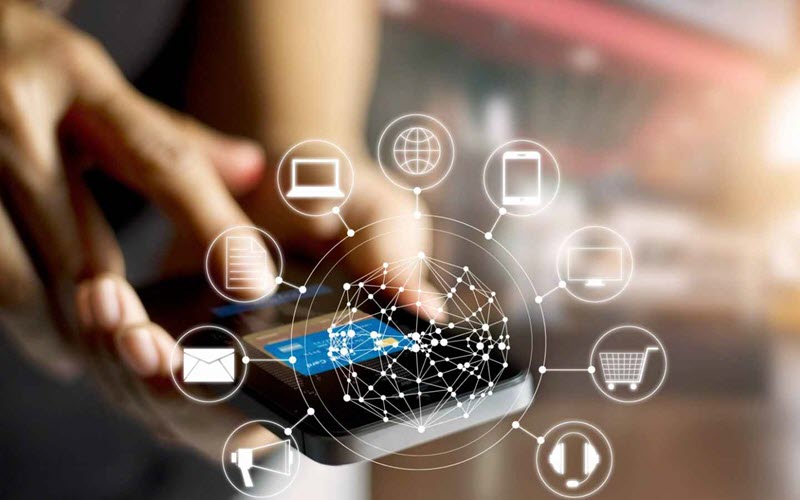Digital procurement can dramatically enhance the jobs of those who work in the corporate procurement organization. The energy spend category is a great example. Years ago, most companies received and paid bills from energy utilities without question, similar to how many consumers still pay their home energy bill today. However, competitive pressures on procurement organizations, combined with a proliferation of energy usage and pricing data, have created a digital revolution in the way companies procure energy.
Building Management Systems track temperature, humidity measurements, occupancy, and lighting levels against location-specific set points to ensure energy is not over-used (which leads to excess cost) or under-used (which can lead to occupant complaints).
Such systems communicate with corporate control centers, which also monitor equipment such as roof-top units and refrigeration for signs of wear or malfunctions (which would otherwise lead to excess cost or early failure) and dispatch service technicians to resolve issues prior to equipment failure. Augmenting all these people, systems, and sensors is optimization software, which controls equipment cycling and set points across a portfolio of sites to take advantage of energy price signals that fluctuate hourly and vary by utility.

Table of Contents
Digital Procurement Transformation
Next-generation digital procurement goes even further than that. Large corporate energy users today use hedging and purchasing techniques akin to those used by only the utilities in the past. In addition to monitoring real-time energy price signals, users keep tabs on forward (futures) price signals on a daily basis and apply multi-tranche layering strategies to slowly step into a contract price for energy instead of making an all-at-once purchasing decision (i.e., “Did I pick the right day or the wrong day to buy?”). In fact, the largest energy users are no longer price takers; instead, they forecast prices on their own and set production and purchasing schedules accordingly.
Next-generation procurement even can disrupt vendor business models. Large corporate energy users are increasingly buying power directly from renewable generators directly, bypassing traditional energy suppliers and utilities. Often times this energy is delivered “virtually” via a financially settled contract instrument. This leaves a utility company to still deliver physical power at a varying price but enables the end user to lock in a price independently through a third party. In other cases, the energy is generated onsite, eliminating the need for a utility company to be involved at all or offering a way to displace purchases made from the utility.
Five Digital Procurement Advantages
E-procurement advantages are becoming more evident as the wider understanding of its many uses become apparent. The main reason companies have embraced e-procurement is to increase productivity, provide visibility into day-to-day transactions and make it easier for users to get the supplies that they need.

It has not been an easy road for e-procurement as implementation has its challenges and it has taken time for business managers and procurement departments to fully accept it. The advantages of e-procurement are slowly being understood:
1. Reducing costs
Costs can be reduced by leveraging volume, having structured supplier relationships and by using system improvements to reduce external spend while improving quality and supplier performance. E-procurement eliminates paperwork, rework and errors.
2. Visibility of spend
Centralized tracking of transactions enables full reporting on requisitions, items purchased, orders processes and payments made. E-procurement advantages extend to ensuring compliance with existing and established contracts.
3. Productivity
Internal customers can obtain the items they want from a catalogue of approved items through an on-line requisition and ordering system.
Procurement staff can be released from processing orders and handling low value transactions to concentrate on strategic sourcing and improving supplier relationships.
4. Controls
Standardized approval processes and formal workflows ensure that the correct level of authorization is applied to each transaction and that spend is directed to draw off existing contracts.
Compliance to policy is improved as users can quickly locate products and services from preferred suppliers and are unable to create maverick purchases.
Using technology
E-procurement advantages can only be fully realized when the systems and processes to manage it are in place. Software tools are needed to create the standard procurement documentation: electronic requests for information (e-RFI), requests for proposal (e-RFP) and requests for quotation (e-RFQ).
These are proven methods to source goods and make the framework agreements that offer the best prices. An adequate, fully integrated e-procurement approach is needed for overall success. Additional programs provide the framework for the supplier databases and spend management as well as holding key vendor information and being an electronic repository for contracts.

All these facilities cost money and a clear business case must be made for e-procurement. In most cases this is fairly clear that cost savings are possible. It pays for companies to spend money on e-procurement technology, this investment will boost efficiency. The longer term reduction in costs will enable companies to direct their resources to more strategic initiatives.
E-procurement advantages are significant bottom-line benefits, including cost reduction, process efficiencies, spending controls and compliance.
The Importance of Procurement to Stakeholders
Stakeholders expect the ease and elegance from the “procurement” tasks they do at home as consumers on Sunday to apply to the work they do for the company on Monday. But current procurement policies and tools are geared toward driving a process—with a lot of rigor and controls—versus an experience or outcome. So it’s not a surprise that stakeholders find the procurement process too cumbersome, slow, and rigid.
The full content is only visible to SIPMM members
Already a member? Please Login to continue reading.
References:
Accenture (2017). “Next Generation Digital Procurement”. Retrieved from https://www.accenture.com/t20171023T071223Z__w__/ng-en/_acnmedia/PDF-63/Accenture-Next-Generation-Digital-Procurement-POV.pdf, accessed 19/11/2017.
Katherine B. (2017) “How Digitalization Improves Transportation Procurement”.
Retrieved from https://www.xeneta.com/blog/digital-procurement, accessed on 12/11/2017 of December 2017.
Purchasing & Procurement Center (2017) “5 E-procurement advantages”.
Retrieved from: https://www.purchasing-procurement-center.com/e-procurement-advantages.html, accessed on 9/11/2017.
Rich W. (2017) ‘3 Steps to reap the benefits of digital procurement’
Retrieved from: https://www.supplychaindive.com/news/3-steps-to-reap-the-benefits-of-digital-procurement/510392/, accessed on 8/11/2017.
Reinhard G., Robert W., Jürgen W. (2016) “Procurement digital transportation”.
Retrieved from: https://www.strategyand.pwc.com/reports/procurement-4-digital-revolution, accessed on 10/11/2017.

